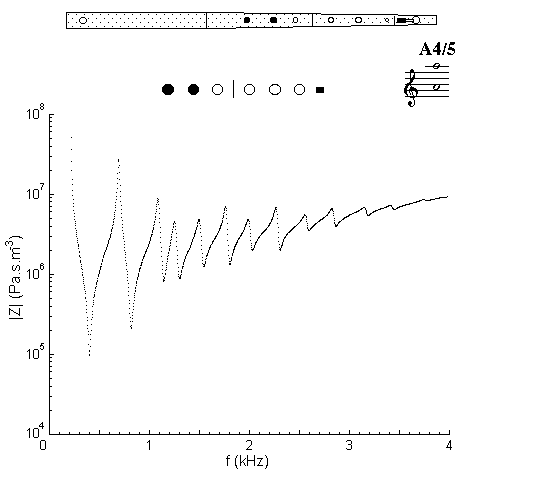| Acoustics of baroque, classical and modern flutes |
baroque flute |
A5 |

|
Acoustic and Fingering Schematic Non-specialist introduction
to acoustic impedance |
This is implicitly a cross fingering (the key leaves the last hole closed), however the four successive open holes make the effect of cross fingering very small for the first two resonances. Notice, however, that the third and subsequent minima are irregular and non harmonic.
The series of open holes acts as a filter to pass high frequencies (the wave doesn't reflect as well for high frequencies, so the instrument doesn't resonate as well). For this flute, the effect occurs not far beyond 1 kHz (it depends on the size of the holes). This effect diminishes the size and regularity of minima (and maxima), and so reduces the power at high frequencies. On the classical flute, the effect appears at around 1.5 kHz, and it is above 2 kHz on the modern flute. This explains the successively brighter timbre of the later instruments.
| Acoustic measurements are available for these flutes - modern B, modern C, classical C, classical D, classical flared, baroque Sound clips are available for modern B, classical flared and baroque |
To compare flutes, it is easiest to open a separate browser window for each instrument. |